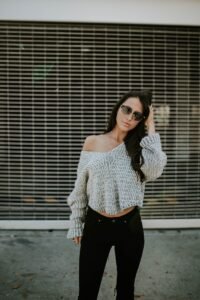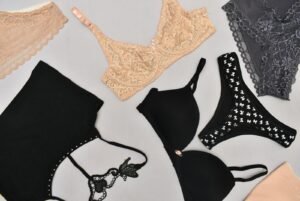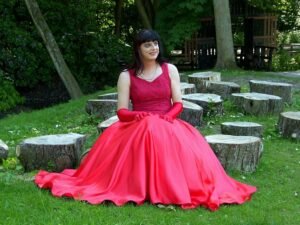1. Understanding Your Body Shape
Knowing your body shape is the first step to dressing well. Common body shapes include apple, pear, hourglass, and rectangle.
Each shape has its strengths, and dressing to highlight those strengths can make a big difference.
Apple Shape:
Focus on clothes that add structure and draw attention away from the midsection. Try V-neck tops and A-line dresses.
Pear Shape:
Highlight your upper body with bright colors and fitted tops. Flared pants or skirts balance your shape.
Hourglass Shape:
Emphasize your waist with fitted dresses or belts. Wrap dresses are a great choice.
Rectangle Shape:
Add curves with ruffled tops, layered outfits, and flared skirts.
By dressing for your body shape, you can create a balanced, flattering look that boosts your confidence.
2. Key Wardrobe Essentials
Building a wardrobe that suits your style and body is important. Here are some must-have items:
Comfortable Underwear:
Start with well-fitted underwear. It’s the foundation of any outfit and makes everything look better.
Structured Pieces:
A well-tailored blazer or jacket adds polish and flatters your shape. Pair it with pants or skirts for a stylish look.
Versatile Dresses:
Dresses like A-line, wrap, or fit-and-flare are flattering and comfortable. They work well for many occasions.
Quality Basics:
Invest in good-quality t-shirts, blouses, and knitwear. These basics can be mixed and matched easily.
With these essentials, you can create outfits that are both comfortable and stylish.
3. Color and Pattern Choices
Choosing the right colors and patterns can make a big difference in how you look and feel. Here’s how to use them to your advantage:
Use Color to Balance Your Shape:
Darker colors can make areas look slimmer, while lighter or brighter colors can highlight your best features.
For example, wearing a dark skirt with a bright top can draw attention to your face and upper body.
Pick Flattering Patterns:
Vertical stripes, small prints, and patterns that draw the eye upward are great for creating a longer, leaner look.
Avoid large, bold prints that can overwhelm your figure.
Mix and Match:
Don’t be afraid to mix colors and patterns, but keep it simple. Pair a patterned top with solid bottoms or vice versa for a balanced look.
By carefully choosing colors and patterns, you can create outfits that flatter your figure and boost your confidence.
4. Dressing for Different Occasions

Different occasions call for different outfits, but comfort and style should always come first. Here are some ideas for various settings:
Casual Wear:
For everyday outings, go for comfortable yet stylish pieces.
Well-fitted jeans, soft t-shirts, and cozy sweaters are great choices. Layer with a light jacket or scarf for added style.
Workwear:
In a professional setting, opt for tailored pants or skirts paired with blouses or blazers.
Stick to neutral colors with a pop of color to keep things professional yet lively.
Evening and Special Events:
When dressing up for a special occasion, choose an elegant dress that flatters your figure.
Wrap dresses or those with a bit of stretch offer both comfort and style.
Add some tasteful accessories like a necklace or earrings to complete the look.
No matter the occasion, the key is to choose outfits that make you feel confident and comfortable.
5. Accessorizing Smartly
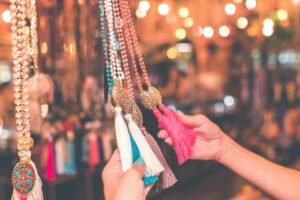
Accessories can transform an outfit, adding personality and style. Here’s how to choose the right ones:
Jewelry:
Simple, elegant pieces work best. A delicate necklace or a pair of earrings can enhance your look without overwhelming it.
Statement jewelry can be fun, but keep it balanced—one bold piece is usually enough.
Scarves:
A scarf can add color and texture to any outfit.
Choose lightweight scarves for warmer weather and cozy ones for cooler days.
You can drape it loosely around your neck or tie it in different ways for variety.
Belts:
A well-placed belt can define your waist and add structure to loose clothing.
Wear a belt over a dress, tunic, or cardigan to create a flattering silhouette.
The key to smart accessorizing is moderation.
Choose accessories that complement your outfit and make you feel great, without going overboard.
6. Footwear for Comfort and Style
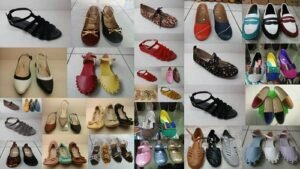
Choosing the right shoes is crucial for both comfort and style. Here’s how to find footwear that works for you:
Supportive Shoes:
Look for shoes that offer good support, especially if you’ll be on your feet a lot.
Cushioned insoles, arch support, and a comfortable fit are key to avoiding discomfort.
Stylish Options:
Comfort doesn’t mean sacrificing style.
Opt for shoes that combine both, like well-crafted flats, low-heeled pumps, or ankle boots.
These can be paired with various outfits and still keep your feet happy.
Proper Fit:
Make sure your shoes fit well.
Avoid shoes that are too tight or too loose, as they can cause blisters or discomfort.
Trying shoes on at the end of the day, when your feet are slightly swollen, can help ensure a good fit.
With the right shoes, you can move comfortably while staying stylish, no matter the occasion.
7. Common Mistakes to Avoid

When dressing over 50 and overweight, it’s easy to make a few fashion mistakes. Here’s how to steer clear of them:
Wearing Baggy Clothes:
Oversized clothes may seem comfortable, but they can hide your shape and make you look bigger. Instead, choose well-fitted clothes that highlight your best features.
Ignoring Comfort:
Fashion shouldn’t come at the cost of comfort. If an outfit feels tight or uncomfortable, it’s not the right choice. Prioritize comfort, as it leads to confidence.
Following Every Trend:
Not all trends are flattering or suitable for everyone. Focus on timeless pieces that suit your body and style instead of chasing every new fashion trend.
Neglecting Proper Undergarments:
The right underwear can make a huge difference in how your clothes fit and look. Invest in well-fitted bras and shapewear for a smooth silhouette.
By avoiding these common mistakes, you’ll feel more confident in your outfits and embrace your personal style.
8. Embracing Your Style with Confidence

The most important part of dressing well is feeling good about yourself.
Confidence comes from within, and your clothes can help bring it out. Here’s how to embrace your style:
Focus on What You Love:
Dress to highlight the parts of your body you love. Whether it’s your legs, waist, or shoulders, choose outfits that make you feel proud of who you are.
Be True to Yourself:
Your style should reflect your personality. Don’t be afraid to express yourself through your clothing, whether you prefer bold patterns, bright colors, or classic looks.
Practice Self-Love:
Remember, your worth isn’t tied to your clothing size or age. Celebrate your body and wear what makes you feel confident and happy.
By embracing your unique style and focusing on what makes you feel good, you’ll carry yourself with confidence, no matter what you wear.
Conclusion
Dressing well over 50 and with extra weight is all about finding what makes you feel good and confident. Focus on clothes that fit well, highlight your best features, and keep you comfortable.
Use colors and patterns to create a flattering look, and choose accessories and shoes that add style without sacrificing comfort.
Avoid common fashion mistakes and embrace your personal style with confidence.
Remember, your age and size do not define your style—what matters is feeling great in what you wear.
Frequently Asked Questions (FAQs)
How Do You Look Classy When You Are Overweight?
Opt for well-fitted, tailored clothes that enhance your best features.
Choose classic styles and quality fabrics to create a sophisticated look. Avoid overly baggy clothes, and use accessories to add a touch of elegance.
How Should I Dress at 50 Plus Size?
Wear clothes that fit well and highlight your shape. Opt for structured pieces like blazers and tailored pants. Choose dresses with flattering cuts like A-line or wrap styles.
Stick to classic patterns and colors for a timeless look.
How Should I Dress to Look Thinner at 50?
Choose clothes that create a smooth silhouette. Opt for darker colors and vertical stripes to elongate your figure. Wear well-fitting clothes that skim rather than cling.
Layering with a structured jacket or cardigan can also help.
What Should I Wear If I Am Over 50?
Wear clothes that make you feel comfortable and confident.
Choose classic, well-fitted pieces like tailored blazers, structured dresses, and quality basics.
Embrace colors and patterns that suit your style and keep accessories simple and elegant.
Is 50 Too Old to Wear Jeans?
No, 50 is not too old to wear jeans. Choose jeans with a comfortable fit and a style that flatters your body.
Opt for high-waisted or straight-leg jeans for a classic look, and pair them with stylish tops or blouses.
How Can I Look Stunning at 50?
Focus on well-fitting clothes that enhance your shape.
Choose classic styles that highlight your best features. Use accessories like scarves and jewelry to add a personal touch.
Maintain a confident attitude, and embrace your unique style.
How to Look 10 Years Younger at 50?
Wear clothes that fit well and enhance your natural shape.
Choose bright, flattering colors and avoid overly trendy pieces.
Pay attention to grooming and skincare, and maintain a confident and positive attitude.
How to Glow Up After 50?
Embrace a healthy lifestyle with a balanced diet, regular exercise, and good skincare.
Wear clothes that make you feel confident and comfortable.
Experiment with new styles and colors that enhance your natural beauty and keep a positive mindset.
How to Age Gracefully in Your 50s?
Focus on maintaining a healthy lifestyle and embracing your natural beauty.
Wear clothes that fit well and make you feel good. Practice self-care, stay active, and choose styles that reflect your personality and comfort.
At What Age Does Your Face Change Most?
Facial changes can start in your late 30s and become more noticeable in your 40s and 50s.
Common changes include wrinkles, skin thinning, and loss of elasticity. Skincare and healthy habits can help manage these changes.
How Can I Slow Down My Aging at 50?
Adopt a healthy lifestyle with a balanced diet, regular exercise, and good skincare.
Stay hydrated, get enough sleep, and manage stress.
Avoid smoking and excessive alcohol consumption to help maintain a youthful appearance.
What Does a 50-Year-Old Woman’s Body Look Like?
A 50-year-old woman’s body may show signs of aging such as changes in skin elasticity, body composition, and muscle tone.
Embrace these changes with a positive attitude and choose clothing that enhances your natural shape.
At What Age Do Females Start Aging?
Females may start to notice signs of aging in their late 30s to early 40s.
Common signs include changes in skin texture, elasticity, and the appearance of fine lines.
Aging is a natural process that varies for each individual.
What Happens When a Woman Turns 50?
Turning 50 often brings changes such as shifts in metabolism, skin changes, and hormonal changes.
Embrace these changes by focusing on health, self-care, and finding styles that make you feel confident and comfortable.
Can I Get in Shape After 50?
Yes, you can get in shape after 50. Focus on a balanced diet, regular exercise, and staying active.
Incorporate strength training, cardio, and flexibility exercises into your routine to improve overall fitness and well-being.
References
[1] https://www.gransnet.com/life-and-style/style-and-beauty/plus-size-clothing
[2] https://www.youtube.com/watch?v=EqTAjEV3Pb4
[3] https://www.youtube.com/watch?v=CD4fjpJ5ieA
[4] https://www.faverie.com/magazine/how-to-dress-over-50-and-overweight/
[5] https://santegrace.com/blogs/news/how-to-dress-when-you-are-over-50
Also Read:
What Colors Match with Blue Saree? (10 Perfect Colors)
Which saree material is best to look slim?
What type of bathing suit is best for my body? (5 Body Types)

